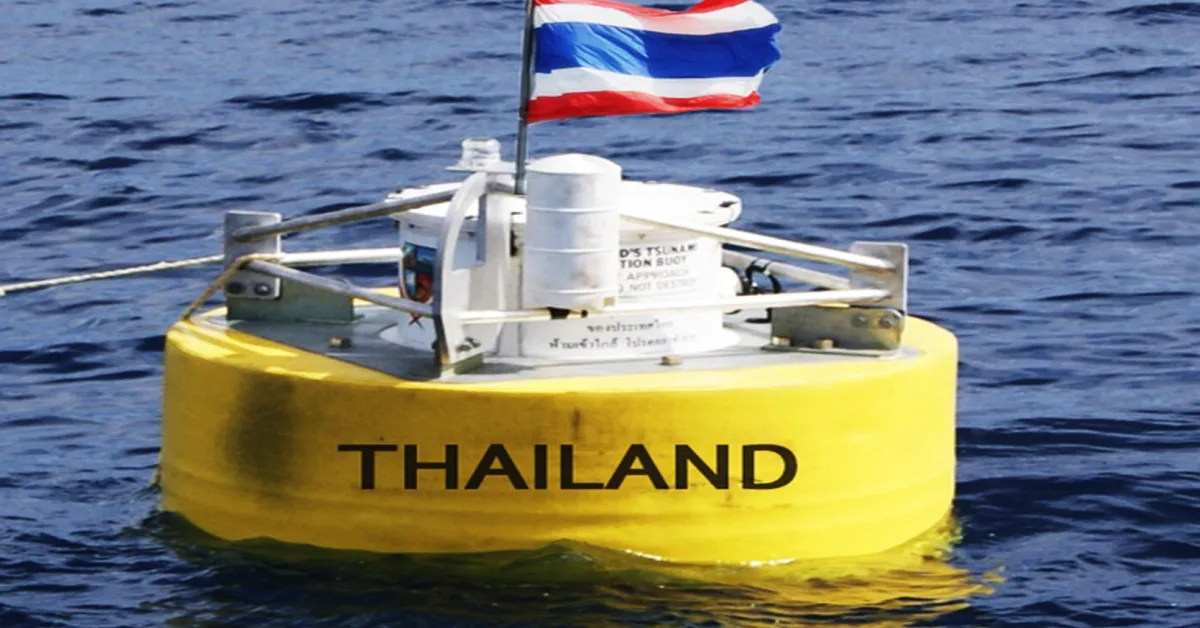
Disaster Warning Device: Tsunami Monitoring Buoy
Thailand is renowned for its maritime tourism, especially in the southern provinces. However, in December of 2004, Thailand and many places around the Indian Ocean were hit by a natural disaster: a giant tsunami caused by a devastating earthquake centered in the northwestern part of Sumatra. This catastrophe resulted in significant loss of life and property.
As a precautionary measure in the event of another tsunami, in 2006, the governments of Thailand and the United States signed a memorandum of understanding on technical cooperation to install Thailand's first tsunami buoy. This joint effort reflected their shared responsibility for the safety of people's lives and property, including tourists along the Andaman coast of Thailand, as well as people in the Indian Ocean region.
The United States government, through the National Oceanic and Atmospheric Administration (NOAA), has provided one tsunami monitoring buoy along with equipment and installation experts. It is installed in the international waters of the Indian Ocean, 965 kilometers, or about 600 nautical miles, west of Phuket Island. Thailand is responsible for the cost of the buoy placement and long-term maintenance of the system. The tsunami monitoring buoy must be maintained annually for two years, which is the battery lifespan.
In 2017, the National Disaster Warning Center of the Department of Disaster Prevention and Mitigation installed a second tsunami detection buoy in the Andaman Sea, in the economic waters of Thailand, which is about 340 kilometers (210 nautical miles) from Phuket Island. The installation of a tsunami detection system measures tsunami waves directly, allowing Thailand to receive real-time tsunami information. Able to accurately assess the size of the waves and the time when the waves will hit the shore, according to standards, the National Disaster Warning Center will be able to issue tsunami warnings quickly and accurately, ensuring the safety of life and property for the Thai people, including tourists around the coast of the Andaman Sea.
NOAA designed the tsunami monitoring system, consisting of two parts:
The working principle of the tsunami detection system is a combination of a water pressure monitor and a surface buoy. Both devices need to communicate with each other all the time; the water pressure monitor looks for changes in water levels and transmits the information to the surface buoy in the form of low-frequency sound signals. When a tsunami wave passes through an underwater platform, it causes changes in the water pressure at the BPR.
The device transforms signals into low-frequency sound signals that can reach the surface buoys through seawater. NOAA receives the transmissions, then transforms them into satellite signals. The National Data Buoy Center website (http://www.ndbc.noaa.gov) publishes graphics showing the data after analysis and presentation.
It sends data every 15 minutes in normal mode and every 15 seconds and every minute.
If there is an abnormal water level change during the Event Mode, NOAA will conduct a thorough check. If a tsunami is detected, the National Disaster Warning Center and various disaster warning centers around the Indian Ocean will be alerted promptly.
When the National Disaster Warning Center receives tsunami information, it will send an alert signal to the warning towers installed in the six provinces of the Andaman Sea coast, warning people to evacuate to a safe area.
Source: National Disaster Warning Center, Department of Disaster Prevention and Mitigation, Ministry of Interior, 353 Sukhumvit Road, Bangna Subdistrict, Bangna District, Bangkok 10260
Tel. +66 2399 4114.